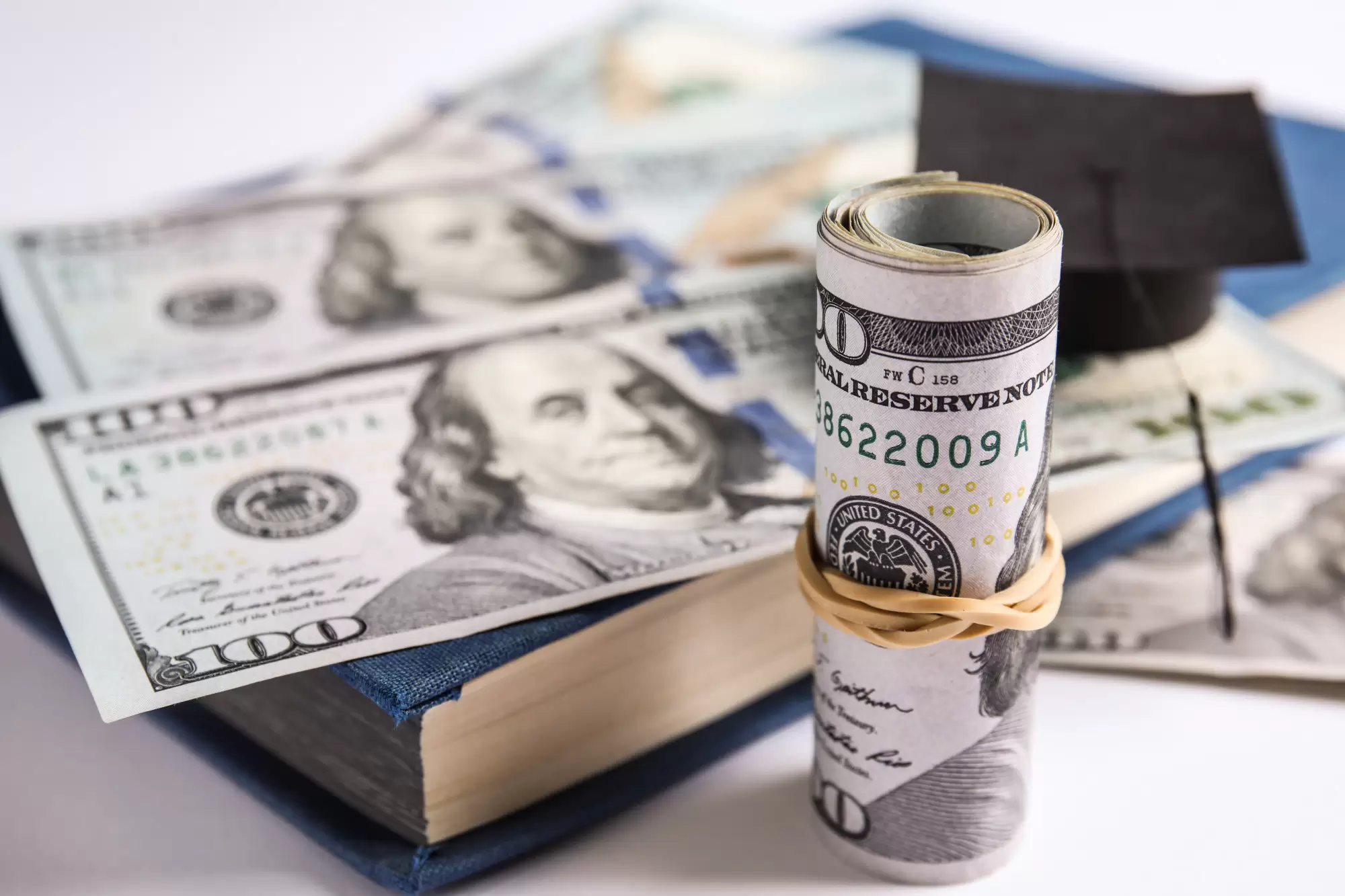

Dollar banknotes, mini student graduation hat and book on white background. Tuition fees concept
According to some research, nine million businesses in the United States didn’t think that they would survive the COVID-19 pandemic. Because of that, they took out an EIDL loan.
However, now that the pandemic is starting to end, many businesses are wondering if the EIDL is a forgivable loan.
Forgiving this loan could help your business succeed, but there are some rules that apply. Keep reading to learn all you need to know about EIDL loan forgiveness.
In general, most of these loans aren’t forgivable, but if you meet some requirements, you may be able to have them forgiven. However, you’ll need to understand the difference between an EIDL loan and an EIDL Advance.
If you applied for an EIDL loan, you can be approved for up to $2 million. However, if you applied for this loan, you have to repay it. But when you applied for that loan, they may have also looked at the option for an EIDL advance.
If you got one of those, you can get forgiveness, but there is a cap. You can’t forgive more than $15,000 across the Targeted and Supplemental Advance.
This is why it’s important to read everything you can about borrowing this money to know exactly what loans are forgivable and which ones aren’t. If you miss payments or don’t make them, your business’s credit could be at risk.
If you got a targeted EIDL Advance, then you won’t even need to apply for forgiveness. It is a grant, and you won’t need to repay it. However, it’s also not considered taxable income.
However, if you get this grant, there are certain things that you can only spend it on. If you violate the terms of the grant, then you’ll have to repay the grant.
You can spend the money on things like rent, fixed-debt payments, utilities, health care benefits, and operating expenses that you didn’t meet when the disaster happened.
When in doubt, make sure that you consult with your tax accountant to ensure that you don’t violate any of the terms.
If you got a supplemental advance, then you’ll need to qualify for different forgiveness. To do that, you’ll have to be in a community that is low income and then have lost half of your revenue to COVID-19.
You’ll also need to have less than employees.
When you apply, they’ll also you to provide your monthly revenue to determine if you did suffer that 50% loss. The Small Business Administration will determine if you qualify for forgiveness, and they’ll pair this money with the EIDL Advance as well.
You can’t have more than $15,000 across both loans.
You may have even gotten a type of EIDL loan that was a shuttered venue operator’s grant. This came out in 2021 in order to help businesses like museums, talent agents, movie theaters, and venues during the pandemic.
These are grants, so you won’t have to repay them or forgive them. However, if you want to avoid paying it back, you’ll need to spend the funds on things like rent, utilities, barriers, PPE, maintenance, administrative costs, insurance payments, debt payments, contractors, and capital expenditures.
Another type of EIDL is the Restaurant Revitalization Fund (RRF). This is a grant that the SBA released in 2021 for the COVID-19 pandemic.
Since many restaurants were closed down or had to reduce capacity, they needed some extra help as well. Just like the other loans, you don’t need to repay these, so you don’t have to apply for forgiveness.
Along with the other loans or grants, you need to make sure that you spend your funds on the appropriate expenses. For example, you’ll need to spend money on things like constructing outdoor seating, operating expenses, payroll, managing your business, rent, debt service, utilities, supplies, protective equipment, cleaning materials, food, drinks, or supplier costs.
If you meet the requirements above, then you’ll also need to forgive your loan as well.
Depending on the type of EIDL that you received, you may not even need to do anything to repay it. As long as you met all of the requirements and followed all of the rules, you shouldn’t have to worry about it.
When in doubt, talk with a financial advisor or contact the Small Business Administration.
If you aren’t eligible for loan forgiveness, you’ll need to learn how to repay those loans. With regular EIDL loans, the interest rate can’t go over 4% each year.
Your loans also can’t go over thirty years. The term length will determine when you have to repay back your loans.
However, one of the main benefits of getting this type of loan is that there is a longer deferment period. You won’t have to make any periods during this deferment.
If you took out the loan during 2020, then you’ll have a two-year deferment window. Borrowers who got the loan in 2021 will have a deferment for eighteen months.
These are only a few things to know about EIDL loan forgiveness, but there are many other factors to consider.
We know that running a business and applying for SBA loans can be stressful, but we’re here to help you out.
If you’re interested in more information like this, explore our website to find even more articles just like this one!
Have you ever looked down at your carpet and wondered if there’s a budget-friendly way…
Counter-Strike 2 (CS2) has elevated the thrill of case openings, captivating both seasoned CS:GO veterans…
Trying to sell a car online should be simple, but sometimes buyers lose interest fast.…
In the hustle and bustle of modern life, finding moments of quiet solace can feel…
You have probably heard on the importance of socializing dog after getting a puppy. It…
The mortgage industry is undergoing a significant transformation, driven by the rise of automation and…